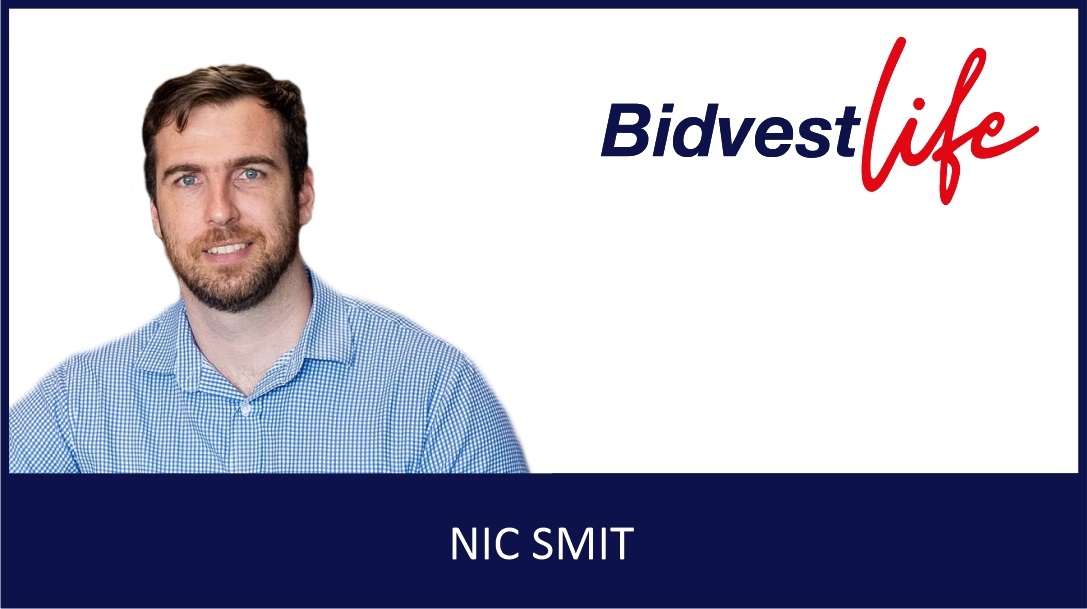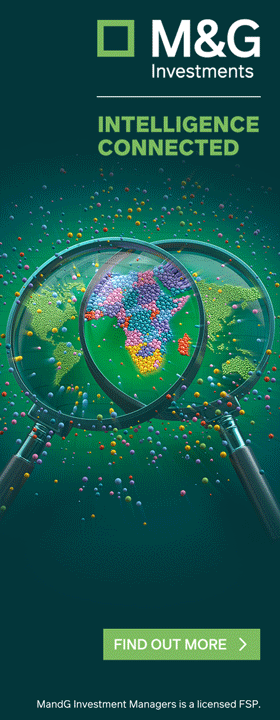Frank Thormann, Portfolio Manager, Global Equities at Schroders
For many equity investors today, proven traditional strategies, like focusing on the long term, may seem quaint. There is a heightened urgency today to pursue short-term gains, as reflected in high trading volumes and much shorter holding periods.
The emergence of algorithmic trading, hedge funds and passive strategies have intensified these trends but there is ample evidence that the tried-and-true methods still work. These include focusing on the long term and recognising that growth in corporate earnings has historically always been, by far, the primary driver of long-term equity returns. Traditional stock analysis, with its focus on company fundamentals remains an effective way to pursue market-beating returns. But it requires a rigorous and disciplined application to identify the companies poised to deliver growth that is not yet understood by the market. We outline below what that discipline entails, but first it is worth examining the current investment environment and why traditional investment strategies continue to demonstrate they offer the best way to pursue outsized returns.
Technology has enabled high-speed trading and short-term thinking, and neither leads to demonstrably better results
A profound transformation has reshaped equity markets in recent decades. While previous eras saw the predominance of patient investors with multi-year horizons, many investors now operate with a heightened sense of immediacy, holding stocks for months, weeks or less.
Figure 1: Investors’ horizons – and patience – has shortened

Source: World Federation of Exchanges, International Monetary Fund, New York Stock Exchange, and NASDAQ, market capitalization divided by total turnover value.
Multiple forces converged to drive this shift.
- The rise of algorithmic and high-frequency trading dramatically reduced the cost and friction associated with executing trades. These technologies have enabled transactions to be undertaken in milliseconds rather than days or weeks.
- Hedge funds and similar vehicles have grown their presence in the equity markets. These investors deploy strategies that prioritise short-term gains, fast arbitrage chasing small price differences in the market, and tactical portfolio repositioning. Long-term thinking, with strategic allocations, is not typically an emphasis.
- The meteoric expansion of passive investment strategies has reshaped market dynamics. Exchange-traded funds (ETFs) and other index-tracking vehicles are major players in today’s markets. As a result, a substantial amount of trading is now influenced by automated, rules-based buying and selling, as well as the periodic repositioning these vehicles must carry out when the indices they track re-balance.
Traditional approaches still provide the best potential for outperforming the broad market
For investors pursuing returns above what the broad markets deliver, competing with these new players on their terms is pointless. The algorithmic traders already have the fastest trading systems. Herd-driven investing influences much of the flow into and out of passive strategies. To state the obvious, you can’t outperform the consensus when you are following it. The good news is that there is no need to do so. A wealth of academic research demonstrates that traditional strategies still offer promising routes to superior gains in equity markets.
- Longer investment periods have delivered superior results. One study found that institutional investors with the longest holding periods outperform their short-term oriented counterparts by about 3% per year. In other words, the markets ultimately reward those who resist short-term pressures and exhibit patience.
- Fundamentals still matter because long-term stock prices follow corporate earnings. Empirical analyses demonstrate that around 80% to 90% of long-term equity returns are directly attributable to growth in corporate earnings and dividends. This underscores how critical a company’s true underlying profitability is to determining the stock value. Additional studies have shown consistent earnings growth significantly impacts long-term equity performance. All of this demonstrates the value of strategies that rely on traditional fundamental stock analysis: assessing the strength of companies’ balance sheets, the quality of their management teams, evaluating their competitive advantages, projecting their earnings potential and determining if their current stock prices are expensive or cheap relative to those earnings forecasts.
Investors who focus on the fundamentals—with a rigorous process—have an opportunity to excel
Once you recognise the historical primacy of corporate earnings in driving long-term stock prices, the next question is: What is potentially the best way to identify companies with the strongest fundamentals and the greatest potential for outsized returns? We believe that objective can be achieved with a number of disciplined strategies.
- Look for “growth gaps” that occur when a company’s growth potential is not yet fully reflected in its price. Even sophisticated investors who focus on fundamentals—like many research analysts at major investment firms—often fail to look far enough into the future. Those with longer horizons, analysing companies’ earning potential not over just the next 12 months but over the next three to five years, can identify significant “growth gaps” between the consensus earnings estimates and the companies’ much longer-term growth potential. As Figure 2 illustrates, a company’s structural and sustainable competitive advantages, as well as its innovativeness, can deliver long-term gains that significantly overshoot consensus expectations.
Figure 2: Markets often fail to look far enough ahead and miss the long-term benefits of competitive advantages

- Find companies with “economic moats” that allow them to sustain long-term competitive advantages. Determining which companies can deliver these growth gaps requires rigorous and robust analysis. We believe one way to narrow the search is to look for companies with advantages that effectively work like castle moats blocking access to intruders—the competitors who would like to steal some of their market share. These moats can take many forms. A company may have a nearly unbeatable brand that customers consistently prefer. It may have proprietary products or exclusive access to valuable resources. The firm may benefit from legacy regulatory approvals or licenses that are difficult for newcomers to obtain. Companies may also have a large operational scope and enjoy economies of scale that create a high barrier to entry for new firms because they can’t match that breadth or compete on costs. Research once again confirms the merits of this approach. It shows firms with significant competitive advantages tend to generate superior and more stable returns on capital, while also often beating consensus expectations of their earnings.
- Focus on earnings persistence. Looking at current earnings and near-term earnings projections alone is not enough. It is also important to assess whether a company will be able to increase its earnings over multiple years. A study demonstrated that companies with persistently growing earnings significantly outperform their peers, achieving annual returns approximately 7% higher.
- Analyse the accounting quality of earnings, emphasising cash-based earnings over accrual-heavy accounting measures. A now famous study found that portfolios favouring firms with high cash-flow-to-earnings ratios consistently deliver abnormal returns of about 10% per year, far outperforming portfolios dominated by firms with high accruals (accounting entries such as increases in accounts receivable, inventory adjustments, depreciation or other non-cash measures) that can temporarily inflate reported earnings without reflecting sustainable cash generation.
- Use an awareness of investor biases to identify opportunities. As a wealth of behavioural finance studies have shown, market participants are prone to systematic and irrational biases—such as over-optimism, anchoring (clinging to past information and ignoring new insights) and herd behaviour—that can distort stock prices and earnings expectations. Consensus forecasts are often based on such investor sentiment rather than pure rational analysis. Research has shown that investors who are attuned to behavioural biases can better anticipate—and better capitalise on—the times when excessive optimism or unjustified pessimism causes stock prices to become misaligned with underlying fundamentals. Another study found that some of these biases—including over-optimism and anchoring—are especially prevalent in growth sectors of the market, such as technology. Furthermore, that same research found investors who adjust for these biases have achieved excess returns of about 8% annually.
- Look for high-quality management teams whose incentives are aligned with shareholder interests. Renowned investor Warren Buffett is one of the biggest proponents of having executive compensation tied to long-term shareholder interests and not short-term measures, like the changes in company’s quarterly or annual stock price. Firms that focus on long-term value creation tend to generate more sustainable earnings growth and often surpass consensus expectations for extended periods.
- Select companies that make disciplined capital allocation decisions. Superior capital allocators—those who reinvest earnings in ways that deliver incremental returns or strategically repurchase undervalued shares of their own stock—create significant value for their shareholders over time. Again, studies prove it. Research shows capital allocation proficiency directly correlates with a company’s long-term financial performance and stock returns. Therefore, investors who can accurately assess the effectiveness of companies’ capital allocation decisions are more likely to outperform.
- Resist the temptations created by the short-term noise and don’t waver from a long-term commitment. The allure of the latest investment fad, a perceived opportunity to precisely time an economic cycle, or bet on the short-term direction of the market can be difficult to resist. Market noise, media narratives and daily performance all feed those temptations. Resisting those distractions requires exceptional discipline and emotional fortitude, particularly in the midst of volatile markets. Successful investing is as much about mastering oneself as it is about mastering the markets. But all the research cited here shows that sustaining a disciplined, long-term approach can result in significant outperformance.
In the investment race, the tortoise beats the hare
Ultimately, sustained investment success hinges not on rapid reactions or chasing the crowded consensus, but rather on deliberate decisions grounded in deep analysis, judgment and patience. That seems to prove decisively that in investing, as in life, the race is won not by the swift, but by the steady.
ENDS

























































































